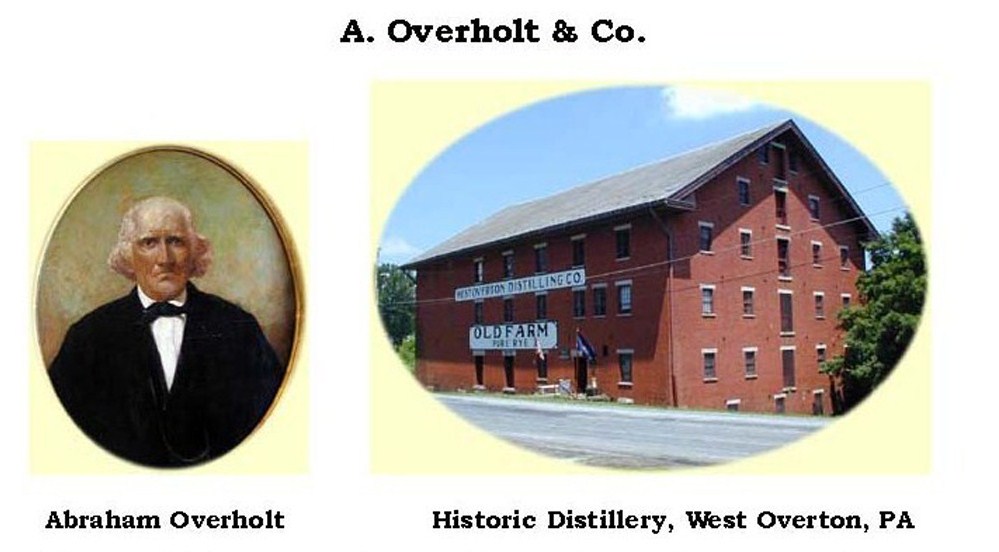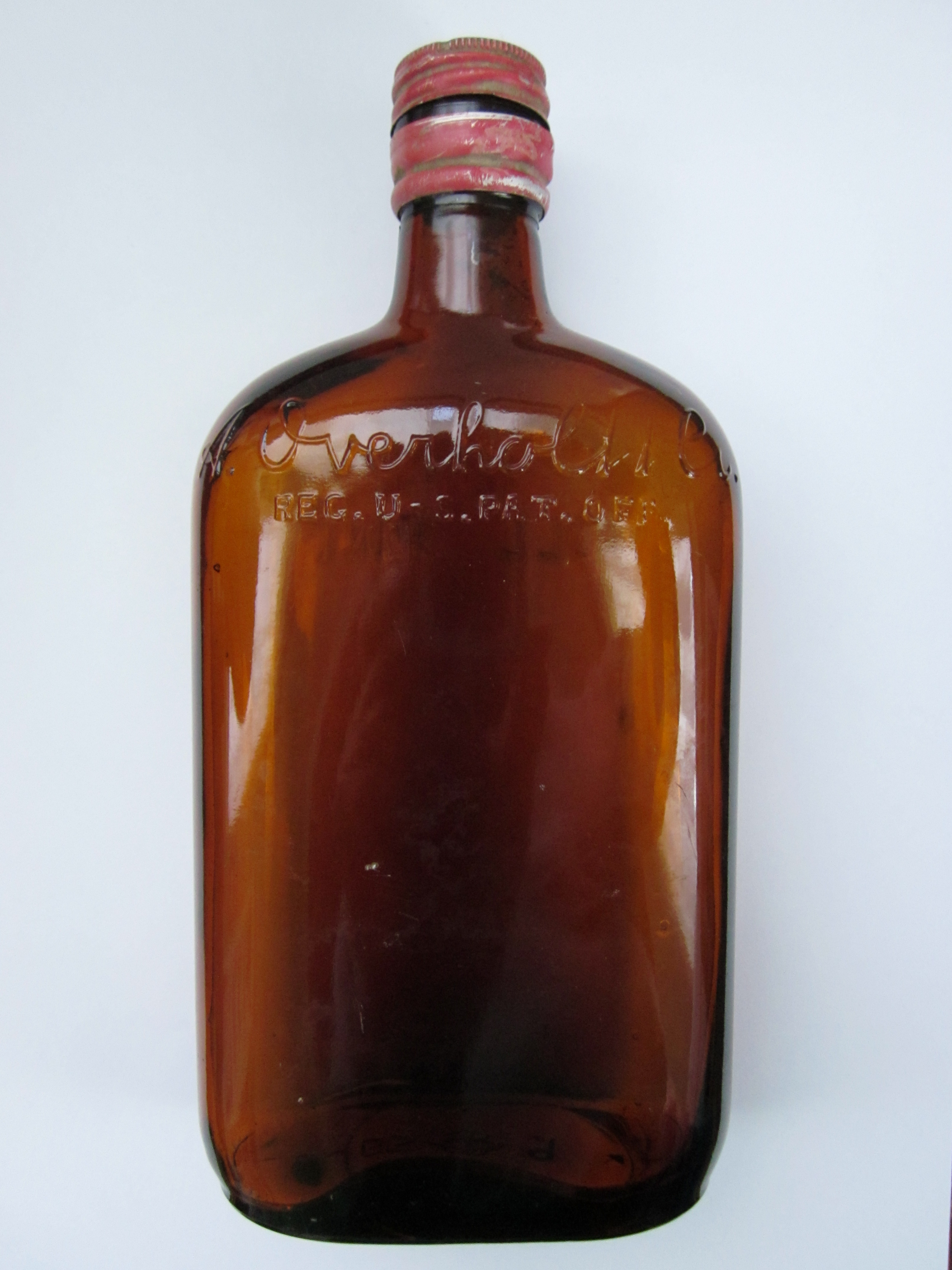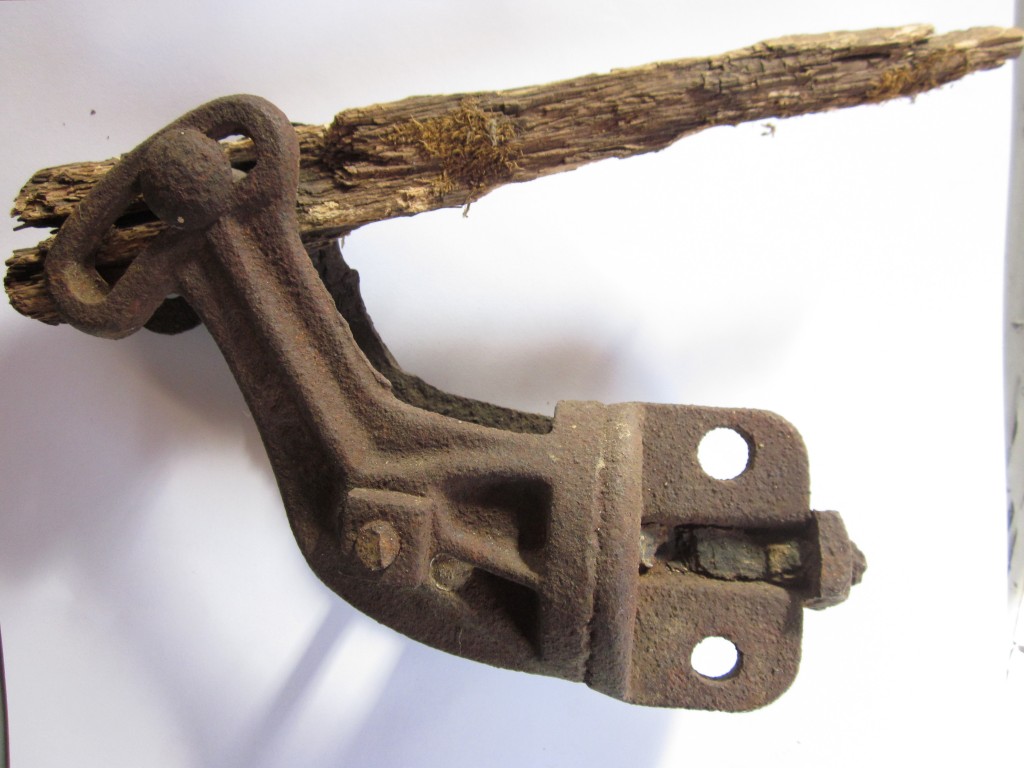Talkin’ Trash in Manchester--Part 2 of 4
by Ray Berg and Alan Dyer
In Part 1 of this series on early trash disposal methods around Manchester, we examined the excavation of a Freedom Township midden, and the discovery of layers of artifacts which reveal aspects of the pioneers’ lives.
Other objects removed from this rural midden include various A. Overholt whiskey bottles, manufactured at a Pennsylvania Mennonite distillery, and said to be Abraham Lincoln’s favorite drink (see Figures 5 and 6). It was widely popular throughout the 19th century among the “sturdy” and “hard-working honest” farmers of the Midwest to whom it was marketed. As Prohibition approached in the late 1910s, the Overholt Company claimed legal exemption from the law for its product, claiming its uses would be strictly “medicinal and religious” for Mennonites. The company lost its case in the U.S. Supreme Court, which declared that Federal law superseded the “religious practices” of a particular sect – an interesting contrast to some current political issues. What remains unanswered is how several bottles of whisky manufactured in the early 1900s, and intended only for Mennonites, ended up in Frederick Eisemann’s Freedom Township midden. These bottles with intact caps have been dated to the late 1910s.
Figure 5 – Abraham Overholt Promotional Emblems
Figure 6 – Abraham Overholt Whiskey Bottle, Circa 1910
The middens have also yielded several farm implements, horseshoes, 19th century metal plates and utensils, porcelain crocks (some not broken), and a 1964 plastic Disney “Dopey Soaky” liquid soap bottle, the newest item in the middens to be identified. Howard Parr, long-time Manchester resident, farmer and historian, has assisted the author in identifying several of the farming objects. Figure 7 shows an object whose purpose and use stumped even Parr. It was found fairly deep in a midden, perhaps dating to John Gumper in the 1880s, with only a portion of the original wooden attachment still intact.
Figure 7 – Unknown Object, Perhaps Dating to the 1880s
Excavation and research on the middens continues. The authors hope to report back on further findings and analysis.
Early Pioneer Burials
As mentioned earlier, the authors share the experience of pioneer burials on their land. Burials of our earliest residents occurred before municipal or church cemeteries were established. Rural areas around Manchester have an unknown number of early farm and small family cemeteries which were formed before the churches established grounds for their members’ burial, or the townships established non-denominational cemeteries. Many of these family plots are simply lost, and can only be found by examining 19th century deed records whose surveys provide an exact location. Freedom Township church cemeteries began in the late 1830s, and the Fletcher Road cemetery, not associated with a church, began at approximately the same time, although private farm burials likely continued through the 1850s.
The Berg homestead has an unknown pioneer buried on the top of a hill alongside Eisman Road, as related by Manchester resident Emerson Hutzel in his 1944 memoir “Memories of Days That Were”. Hutzel, who grew up in the late 1800s in the Eisman Road farmhouse now owned by Dale and Betty Kennedy south of Berg’s home, wrote as follows: “I have very vivid memories of old Mr. Sandford (a nearby resident) telling me of the old settler who was buried beside the road on a knoll a little distance north of our farm. I can’t pass this spot marked by a huge oak, even today, without having creepers go up my back”. The huge oak is still there, and the likely burial spot is marked by a patch of ground where nothing seems to grow even after repeated seeding attempts by the current owner. The identity of the pioneer is unknown, but the burial likely dates from the 1835-1845 period.
Hutzel also refers to a family cemetery south of his farmstead, along the south side of the now-closed Bemis Road just east of Eisman Road. This area is now a small, rectangular treed plat among cultivated fields which has been clearly set aside from cultivation. Again the occupants of this burial yard are unknown, but are likely members of the Ayres (Ayers) family, long-time mid-19th century owners of the property.
In Parts 3 and 4, the authors explore the history of trash disposal in Manchester Village, including common 19th century practices, the problems they created, the mounting cries for reform, and the move to more modern means of ensuring man’s sanitary needs.













You must be logged in to post a comment Login